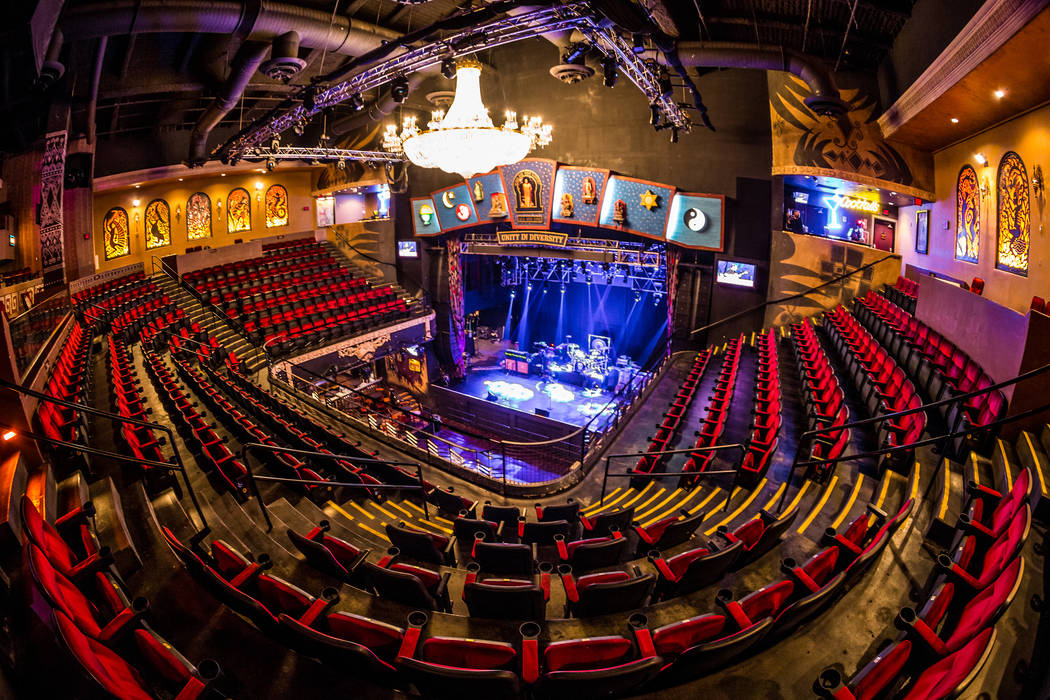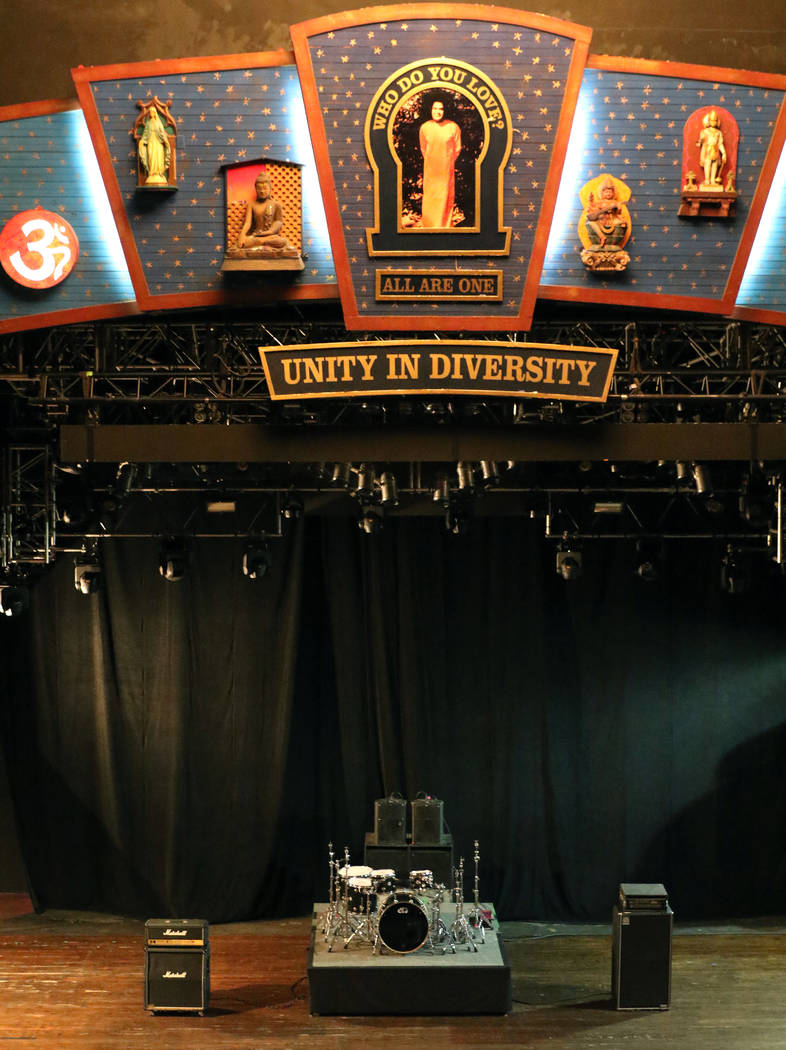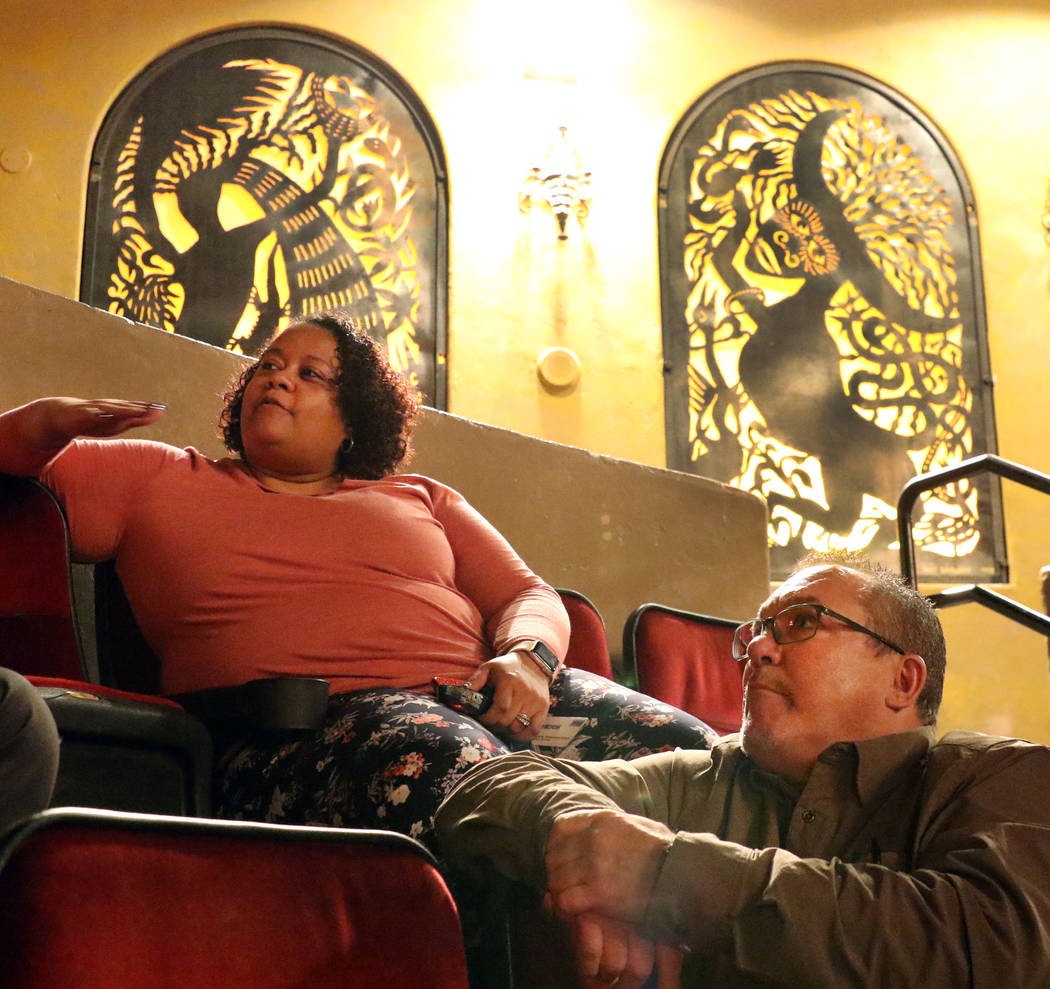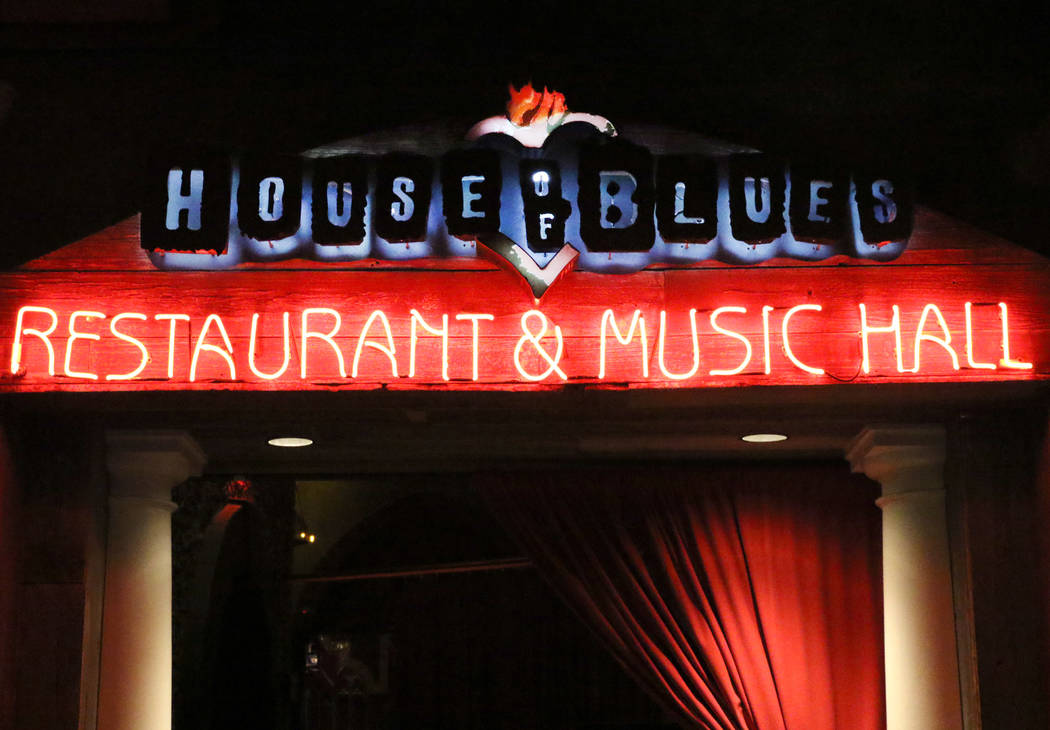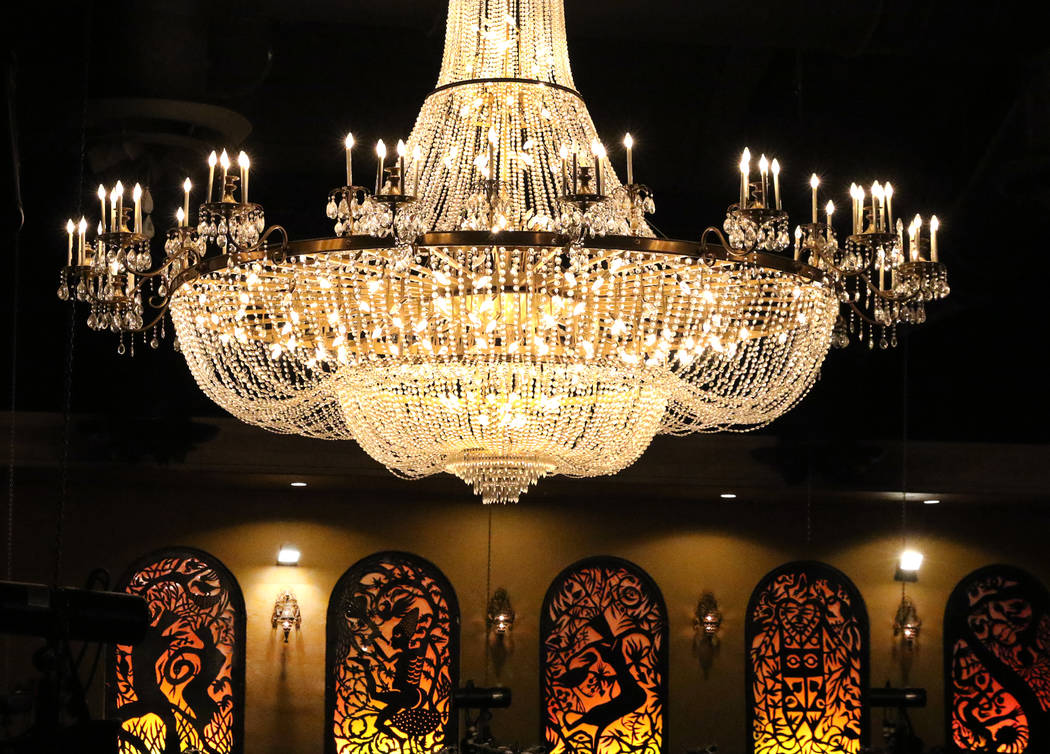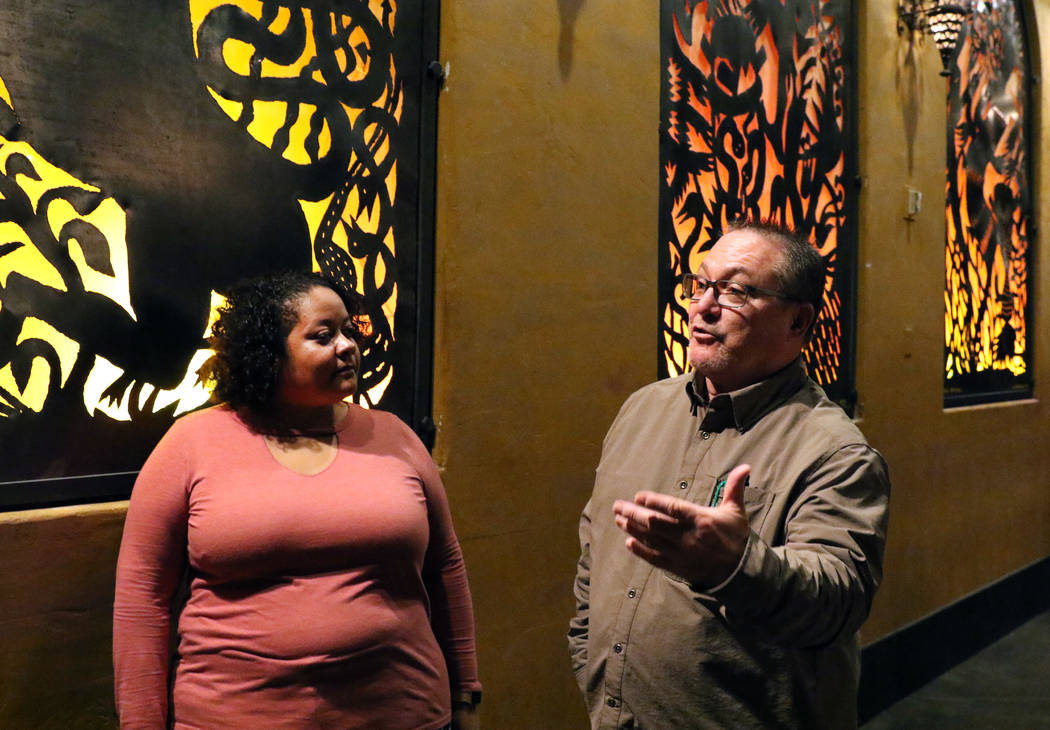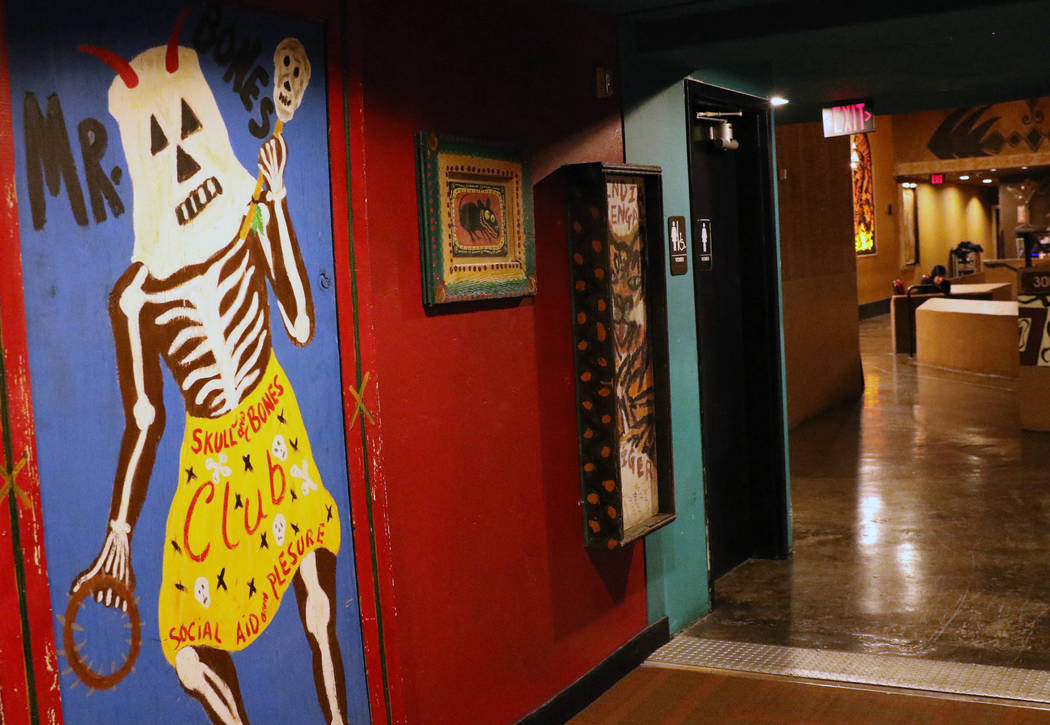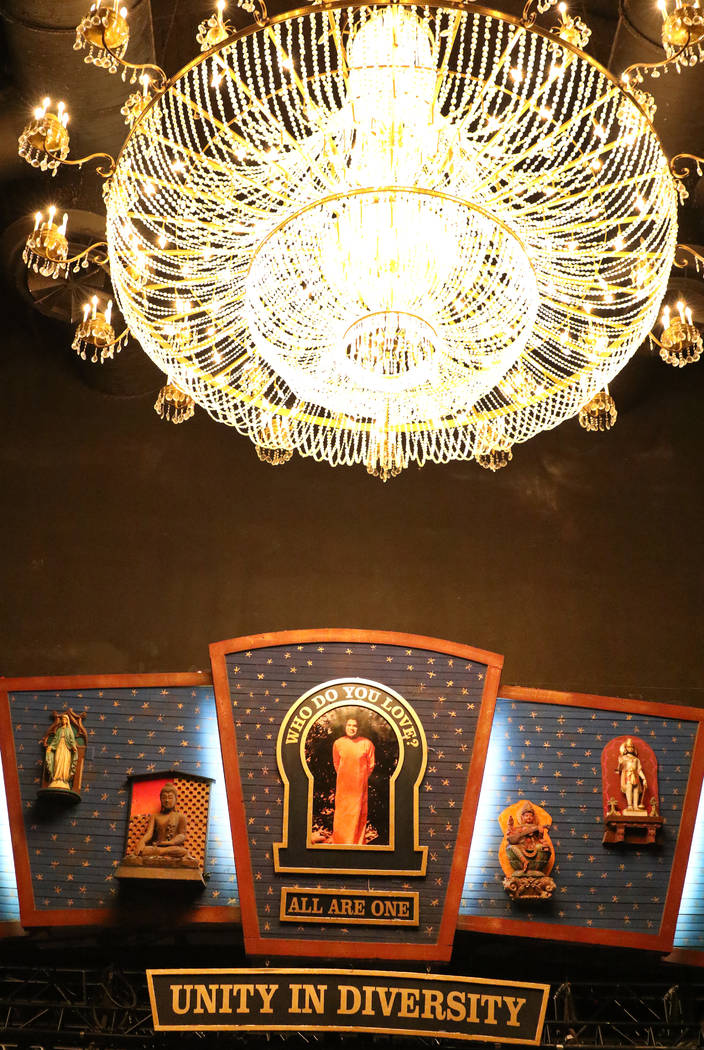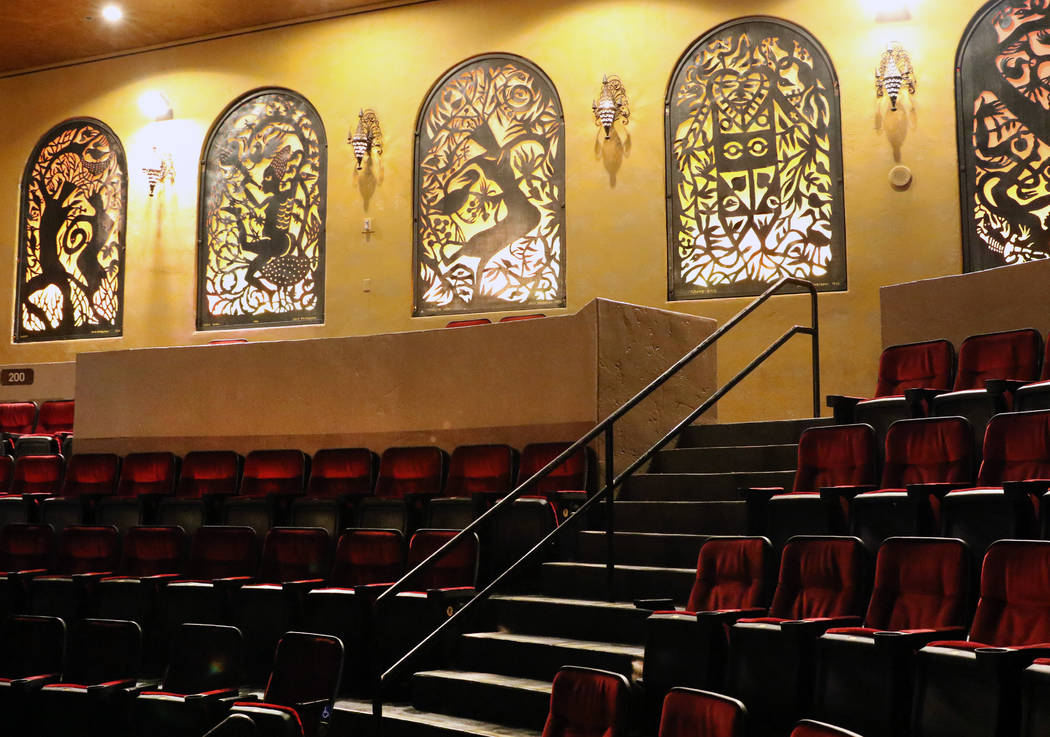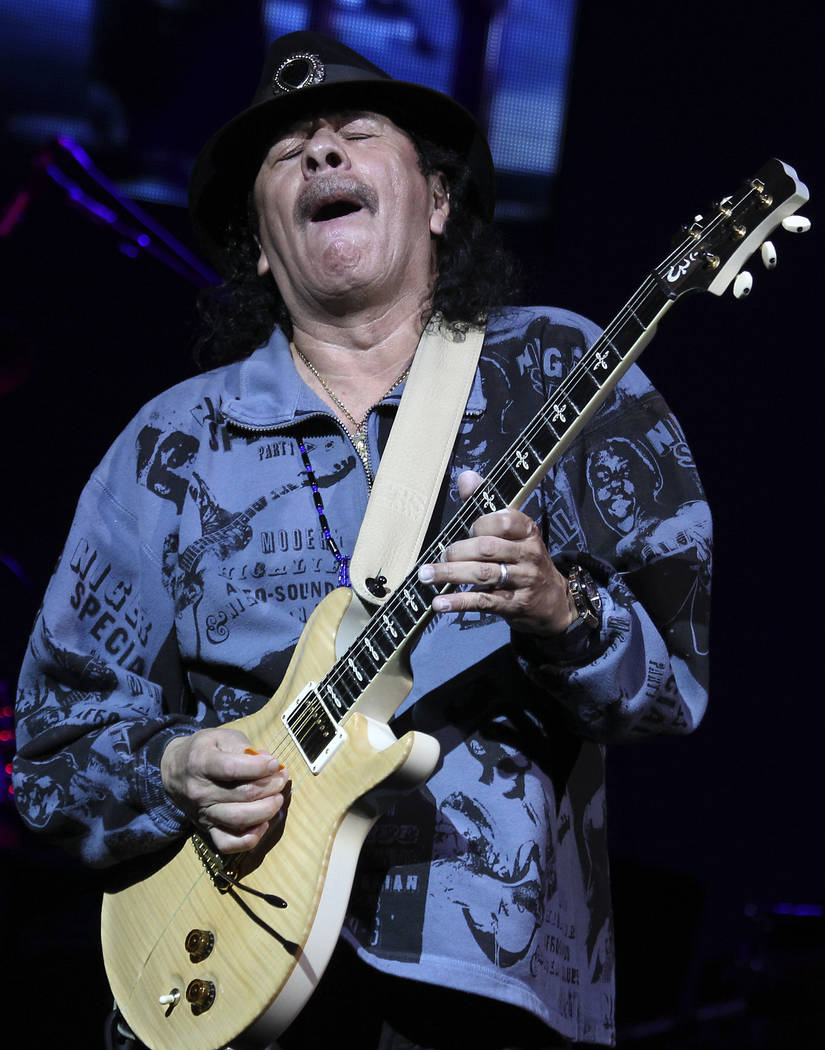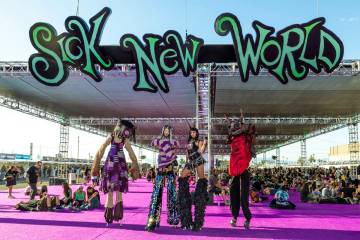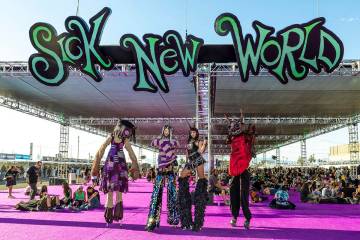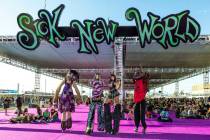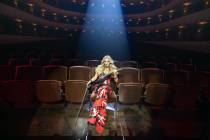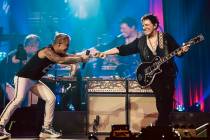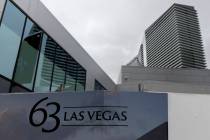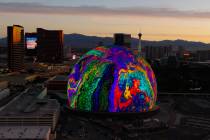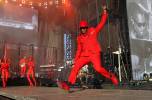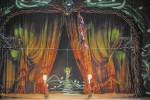Big stage, big names: Las Vegas’ House of Blues turns 25
Twenty-five years ago, Bono knocked on heaven’s door with Bob Dylan and a venue was born.
“Here we are in the House of Blues / Black ties and cowboy shoes / Not much to win, but a whole to lose,” the U2 singer ad-libbed onstage with the Rock and Roll Hall of Famer, who christened the room with his headlining show on opening night.
That was March 2, 1999.
Two-and-a-half decades later, the House of Blues remains a constant in a city posited on near-perpetual change.
It’s served as a launching pad and landing spot for some of the biggest names in music.
The (relatively) little room with the big chandelier has had its share of even bigger moments over the years.
Eminem, Destiny’s Child and Linkin Park, to cite but a few, played there before they were industry giants.
On New Year’s Eve 2000, Guns N’ Roses reconvened for its first show in seven years at the House of Blues, dancing with Mr. Brownstone again after the splintering of the group’s previous lineup.
Hometown favorites The Killers launched their third album, 2008’s “Day & Age,” with a special performance at the House of Blues in October 2008, the show packed as tightly as a clown car.
Britney Spears infamously dropped by in May 2007 for a blink-and-it-was-over gig, where she managed to lip sync, chew gum and appear hopelessly bored all at once.
From James Brown to Aretha Franklin, Justin Timberlake to Slayer, a litany of genre-defining acts have taken to the House of Blues stage.
Despite its success, the venue’s longevity was no given in a perpetually-evolving market where the old gives way to the new with the rapidity of spinning slot machine reels.
“There’s a lot of places that have opened and closed,” says former Mandalay Bay President and COO Chuck Bowling. “I think they stay true to who they are, bringing in diverse and new as well as classic bands of all genres. That’s what’s made them relevant.”
Live music room boom
The cupboards weren’t exactly bare, but they were the concert hall equivalent of a bachelor pad’s spartan shelves offering only peanut butter and spaghetti noodles.
Las Vegas has evolved tremendously as a music market since the House of Blues first opened, its entertainment options now arguably defined less by the top-dollar production shows of yore than by rock and pop star residencies and all of the big-name DJ-producers who soundtrack the booming nightlife scene.
But it wasn’t always this way.
Before the emergence of the House of Blues, the landscape for midsized music venues in Las Vegas was decidedly less populated.
The Huntridge Theater, which would close in 2004, was entering its final run. The Aladdin Theater was the stalwart on the Strip. The Joint at the Hard Rock Hotel was a major player. The International Theater at the then Las Vegas Hilton hosted mostly nostalgia acts.
That was about it in terms of dedicated music venues of that capacity outside of casino showrooms and arenas.
Compare that with today: The Pearl at the Palms, The Chelsea at The Cosmopolitan of Las Vegas, Brooklyn Bowl at The Linq Promenade, Dolby Live at Park MGM, the Encore Theater, the Resorts World Theatre, the BleauLive Theater at Fontainebleau Las Vegas and The Theater at Virgin Hotels Las Vegas have all opened since.
The House of Blues was a catalyst of what’s become an increasingly crowded and competitive marketplace. It also helped set a new standard for a venue being an attraction in and of itself, regardless of who might be performing.
With its artwork-adorned walls and wood-grained decor, the room became part of the experience, prefacing an era when concert halls have become increasingly elaborate and aesthetically inviting.
“When people walked in to see this, they were just in such awe,” says John Durfee, facilities manager for House of Blues Las Vegas. “You could come in here once a month and look around and you’re still going to find something you didn’t notice the first time.”
Crowded House
When the House of Blues debuted, doors and floodgates were opened in unison.
“It was crazy,” says Jay Mateo, the House of Blues’ director of special events. He’s been with the company since day one, first hired as a bus person, and experienced the mania of the venue’s early years firsthand. “There were hours of waiting to get into the venues. Shows would always sell out left and right. It was just nonstop. It’s still fun now, but it was really, really hip back then.”
The enthusiasm extended to Vegas musicians.
“Once the venue opened it was an instant goal to get in there,” says Jenine Cali, singer-drummer for Vegas rockers The Dirty Hooks, who also used to play in local alt-rock troupe The Day After … “It’s one of the best stages to play in Vegas.”
And it’s remained so for plenty of others.
“There’s always been a magic to that venue from the backstage to the stage,” says Kane Churko, a musician and producer who’s worked with the likes of Five Finger Death Punch, Papa Roach and In This Moment. “There’s something about the worn wood planks on the stage that invokes an immediate sense of nostalgia. Stepping on that stage for the first time, you can feel the lingering energy of everyone who has performed there.”
What initially distinguished the venue wasn’t just its look and the novelty of seeing big names in a relatively cozy, 2,000-capacity room, but also the House of Blues’ multipronged approach to attempting to create a whole evening of entertainment with its adjacent restaurant, smaller side lounge and the Foundation Room nightclub perched atop Mandalay Bay’s 61st floor.
“I think we showed that there was an actual business model there with making it a complete night out,” says Sasha Rincon-Camacho, the former regional marketing director for House of Blues Entertainment. “It’s not just about seeing the artist.”
As the Vegas concert market has changed, so has the House of Blues’ place within that market, with more and more venues vying for artist bookings.
These days, the House of Blues has become more focused on bringing in on-the-verge acts in addition to hosting residencies from veteran rockers like Tesla and Carlos Santana.
It’s tempting to say that the House of Blues has come full circle — save for the fact that said circle has yet to be completed.
“I feel like there’s still so much more left to do,” Rincon-Camacho says. “In this city, typically, when something gets a little older, it’s either rebranded or maybe sent to the Neon Boneyard to be remembered. We’re still here.”
Contact Jason Bracelin at jbracelin@reviewjournal.com or 702-383-0476. Follow @JasonBracelin on Twitter.
COMPLIMENTS OF THE HOUSE
Members of the Las Vegas music community share their memories of playing and seeing shows at the House of Blues:
Jenine Cali, singer-drummer in The Dirty Hooks
"My old band (The Day After …) got to open for such bands as Soul Asylum and Angels and Airwaves there, and it was more than amazing. Now in The Dirty Hooks, years down the road, we got the ultimate opportunity to open/tour with Stone Temple Pilots. Not only did we get to play at HOB in our hometown, but to play to a sold-out crowd was the highest honor you could have as a local artist."
Chris Heers, singer-songwriter
"I don't know how I missed becoming an uber Brandon Flowers fan until this night (April, 16, 2011). I must have been under a country music rock for a while. He did 'Viva Las Vegas,' 'Bette Davis Eyes,' some Killers tunes. It was epic. Amazing sound as always in there. Someone told me that Brandon would chug a few Red Bulls right before he came out on stage. He did have that kind of harnessed energy — almost shaky with energy, pure joy to be playing music. He was so full of incredible, authentic happiness to be there singing to us, and it was contagious. It was an amazing show."
Laurie Steele, host of "The KOMP 92.3 Homegrown Show"
"Right before House of Blues opened for business, the director of marketing took KOMP staff on a pub crawl that ended at the House of Blues, where he gave us a tour of everything before it opened to the public. It was a lot of fun, and it kicked off years of great memories at the House of Blues, both from watching shows in the audience and also hosting shows there as well. It's one of the best rooms in town to see a show, and the staff has always been great to work with."
Dave Tatlock, singer-keyboardist in The Soul Juice Band
"We've been playing at the House of Blues for the last six months, and our favorite memory is the show we just played last Saturday. The B Side lounge was packed and people were dancing and having a great time all night. We even had little kids dancing with the adults because it's an all-ages venue and we do a family-friendly show. A close second was when Carlos Santana watched our entire third set a month or so ago. What an honor!"
Mike Xavier, hip-hop artist
"My favorite memory of the House of Blues is when I headlined their 2018 Brew Fest. There were approximately 1,900 people in attendance, and the GA pit was packed for my set. Just as I was about to walk on stage, the lights dimmed, and my logo appeared on the giant center stage screen. My trumpet player shouted into his mic, 'Are you ready for Mike Xavier?!' The crowd responded with a roaring cheer. It was an incredible experience."



